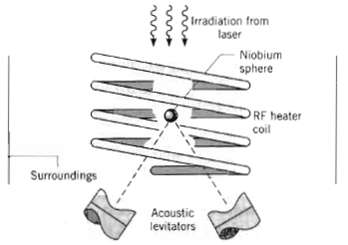To simulate materials processing under the microgravity conditions of space, a niobium sphere of diameter 3 mm
Question:
To simulate materials processing under the microgravity conditions of space, a niobium sphere of diameter 3 mm is levitated by an acoustical technique in a vacuum chamber. Initially the sphere is at 300 K and is suddenly irradiated with a laser providing an irradiation of 10 W/mm 2 to raise its temperature as quickly as possible to its melting point (2741 K). When the melting point is reached, the laser is switched off and a radio frequency (RF) heater is energized, causing uniform internal volumetric generation q to occur within the sphere. Assume that the niobium sphere is isothermal and diffuse and gray with an emissivity of 0.6, and that the chamber walls are at 300 K.
(a) How much time is required to reach the melting point?
(b) How much power must be provided by the RF heater to maintain the sphere at its melting point?
(c) Is the space wise isothermal assumption realistic for the conditions of parts (a) and (b)?

Step by Step Answer:

Fundamentals of Heat and Mass Transfer
ISBN: 978-0471457282
6th Edition
Authors: Incropera, Dewitt, Bergman, Lavine





